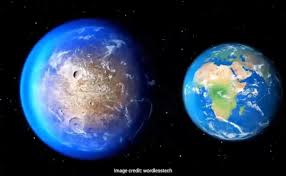Durham. In the last few decades, several events have excited the scientific community. These (events) may actually be a sign of life outside the Earth or its atmosphere. There is no doubt that this (incident) will happen again. Recently, two completely different examples have aroused excitement. NASA This mysterious interstellar object was ‘Oumuamua’ which came to light in 2017. At the same time, another example was the possible discovery of phosphine gas in the clouds of Venus in 2021.
In both cases, it seemed possible that the phenomena indicated some kind of extraterrestrial biological source. In particular, Harvard University physicist Avi Loeb argued in favor of the oddly shaped ‘Oumuamua being an alien spacecraft. Along with this, finding phosphine in the atmosphere of a rocky planet is considered a solid sign for life, because on Earth this (gas) is continuously produced by microorganisms.
So how can we be sure that we have reached the right conclusion for something secondary like the presence of a certain gas or a strange-looking space rock? In our new article published in Astrobiology Journal, these arguments are being made after evaluating many such evidences.
Many people believed, ‘These could be aliens!’ It should be interpreted in this sense. In contrast, we often use the word “may” to express something that is more likely, such as “It may snow today.” But the scientific world needs to express itself rigorously, to articulate transparently the degree of confidence justified by the evidence.
Some people estimate probabilities based on the Bayes formula, but this doesn’t really work that well when it comes to alien life. For example, the prior probability of the existence of aliens requires information. And intuitions about it vary dramatically (estimates of the number of habitable planets in our galaxy range from one to billions).
Simply put, we know very little about alternative sources of the phenomenon. Perhaps we have not yet explored the possible causes of the relevant event enough. After all, humans have conducted only a limited amount of rigorous research – we don’t know every single process that can produce a certain gas in the atmosphere.
In 2021, a group associated with NASA published a paper establishing the ‘Confidence of Life Detection’ (COLD) framework designed to solve this problem. It recommends seven steps to verify a finding, ranging from ruling out contamination to obtaining follow-up observations of the presumed biological signal in the same area. Our new paper published by the Group Exploring Uncertainty and Risk in Contemporary Astrobiology (EURICA) brings another proposal.
A dedicated team of experts will make decisions based not only on their assessment of the scientific evidence (X-axis in the image above), but also on the extent of consensus in the community (Y-axis). So the worst assessment will have low consensus among experts and limited evidence, while the best assessment will have high consensus and strong evidence.
Astronomers should not limit their research to studying signs of life. They should also carefully examine the possible ways in which non-biological processes might mimic the same signals. Only when we know this, may we finally be able to say, “This time, it really might be aliens.”
 Indian Thought Latest News & Views
Indian Thought Latest News & Views



